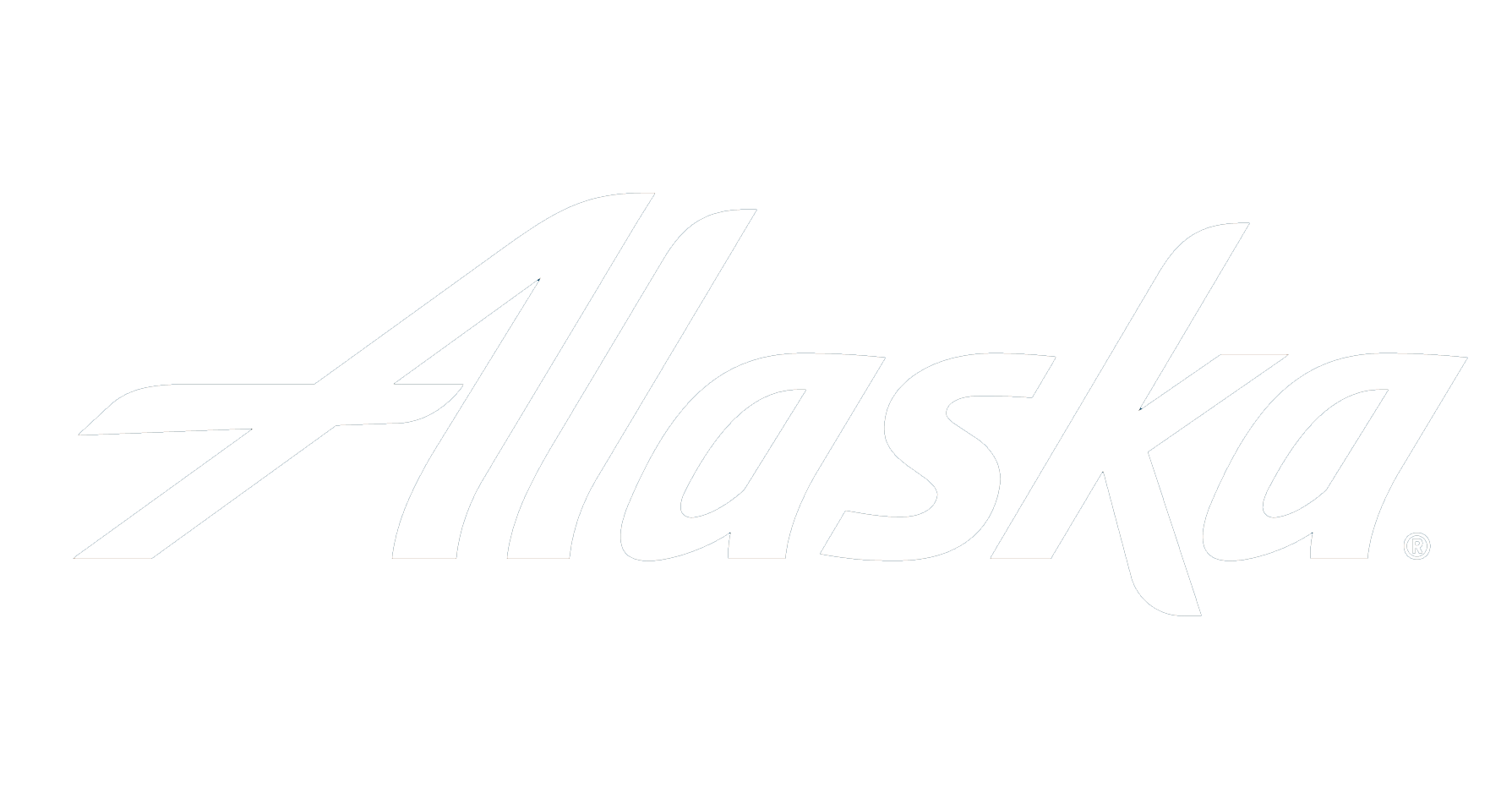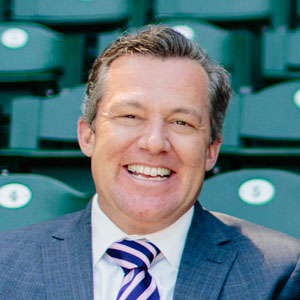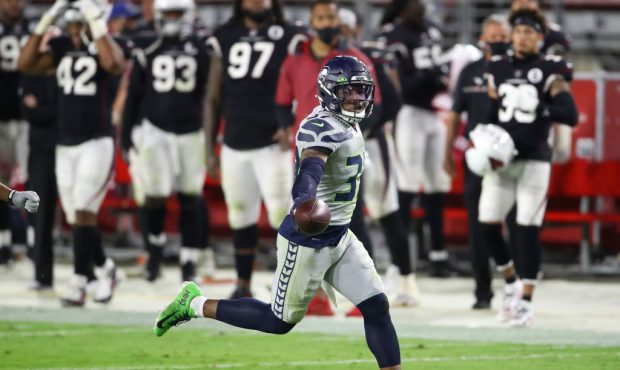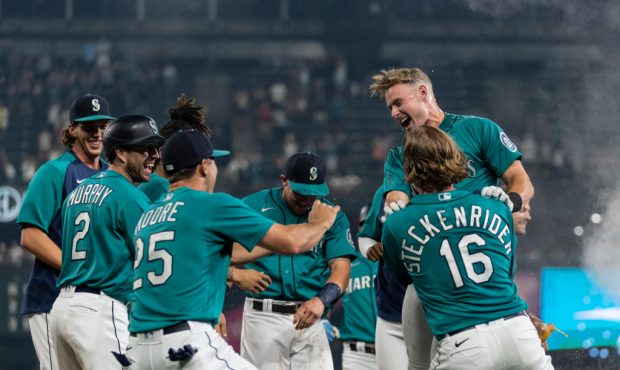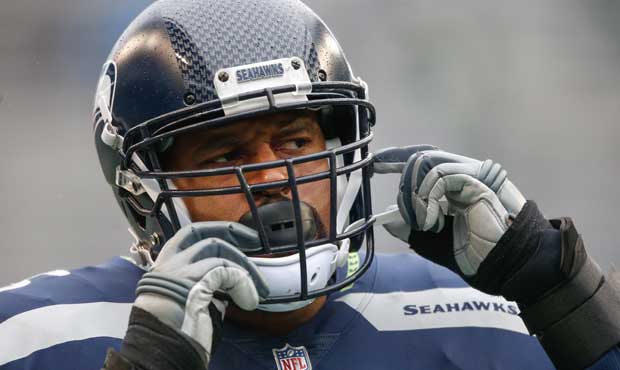The Eye-Opener: Seahawks overlooked again, and that’s a good thing
Jul 19, 2017, 8:57 AM | Updated: 11:23 am
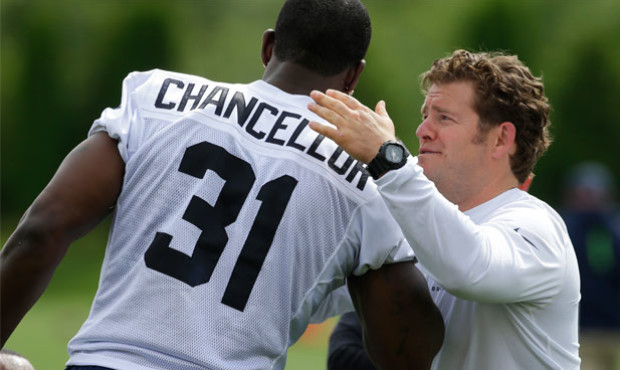
Once the NFL's top-paid strong safety, Kam Chancellor is entering the last year of his deal. (AP)
(AP)
We’re used to looking for slights.
Comes with the territory out here in the Pacific Northwest. So when an All-Star who’s in his fourth year as a Mariner is described first and foremost as an ex-Yankee, we roll our eyes (or in my case, raise my voice).
We joke about being South Alaska, but really it’s more an acknowledgment that our regional isolation makes us easier to overlook. That’s especially true when the national sports media spends most of its time staring at New York’s belly-button.
Still, it’s surprising that Seattle was largely omitted from a recent top-25 list regarding the NFL. After all, the Seahawks have won 10 or more games over the past five seasons, appeared in two Super Bowls and have some of the biggest stars in the league.
But before anyone overreacts, let’s make it clear: It’s a good thing the Seahawks weren’t included on this list because Bill Barnwell of ESPN.com was ranking the 25 most-outsized contracts in the NFL. It’s a fascinating idea because it doesn’t look at the worst contracts (a judgment) or the biggest contracts (which are often artificially inflated). It seeks to measure those contracts which farthest exceed the industry average for the given position.
You know what you’re not going to find on Barnwell’s list? Any deal negotiated by Seahawks general manager John Schneider.
The only Seahawk whose deal is on the list is tight end Jimmy Graham, who signed the contract with New Orleans. And given the mechanics of the contract, the Saints actually wound up paying Graham $13 million for the one season he spent as a Saint on the current deal while the Seahawks have paid him $17 million for the past two years in town.
The omission of the Seahawks reflects two things:
1) Seattle’s judgment when it comes to retaining players.
2) The Seahawks’ technique for re-signing and retaining that talent.
Let’s start with the eye for talent before we get to the salary-cap mechanics.
Under Schneider, the Seahawks have been judicious with their contract extensions. Name the last player that Seattle signed to an extension re-signed who did not at the very least maintain his level of play. Well, OK, the last player other than Jeremy Lane last season. Seriously. I’m waiting.
(Lane was re-signed as an unrestricted free agent as was Jermaine Kearse last year. The author regrets the error. The author also regrets being an idiot.)
You have to go all the way back to 2010 when Seattle signed receiver Mike Williams – the one from USC – to find a guy whose performance tailed off after inking an extension. It has been so long that that Mike Williams is no longer the Mike Williams you think of when someone’s talking about receivers. Now, it’s the incoming rookie out of Clemson, who is known as “Big” Mike Williams.
Schneider is entering his eighth season as Seattle’s GM, and in that time there’s one deal that you would mark as an outsized failure: Percy Harvin’s. Not only did the Seahawks give him a top-shelf contract, but they gave up three draft picks – including a first-rounder – for the right to do so. The Seahawks also won the Super Bowl that year – a game that Harvin scored in – which lessens the irritation with the mistake, though not necessarily its impact.
The second part isn’t necessarily more complicated, but it is more boring because it relates to the salary-cap mechanics because avoiding Shaun Alexander-sized mistakes when it comes to re-signing key players is only part of the explanation. After all, Barnwell wasn’t measuring the worst contracts. He was measuring the biggest in relation to the industry averages at a given position, and considering that Russell Wilson, Earl Thomas, Kam Chancellor, Bobby Wagner and Richard Sherman have all been considered among the five best players at their respective positions, it wouldn’t be a problem per se for any of those guys to make this list. After all, Andrew Luck is among Barnwell’s 25 most outsized contracts. So is Denver’s Von Miller and Kansas City’s Eric Berry.
The reason there are no Seahawks relates more to contract structure and strategy than it does to salary size.
Short and early. That’s the quick summary for the structure and strategy. Keep extensions short, sign ’em early. In a league full of five- and sometimes even six-year contracts, the Seahawks have stuck to four-year extensions executed as the player enters the final year of his rookie contract.
It’s akin to how baseball teams have started “buying out” the arbitration years of a young stud hoss. The team gives the player a raise before it is actually required to, which is offset by the fact that the average annual payout over the life of the extension isn’t as great as it would have been had the team waited until the player was entering or eligible for free agency and had more leverage.
Chancellor, Thomas, Sherman, Wilson and Wagner all signed extensions before beginning what would have been the final year of their respective rookie contracts. K.J. Wright and Cliff Avril signed extensions in the midst of the final seasons of their existing deals.
The final ingredient to Seattle’s approach has been the length of the extensions. Teams often sign players to five-year extensions. Seattle has consistently signed its players to four-year deals.
That has come at a cost of control. Seattle doesn’t control its players for as long as others might, but yielding that control has lessened the total compensation required.
The cumulative effect is that Seattle is shifting the window it is paying to one year earlier than it has to, and one year shorter than teams often ask for. The result is that while the salaries remain comparable to the top-end earners at the position, the deals aren’t among the league’s most outsized.

